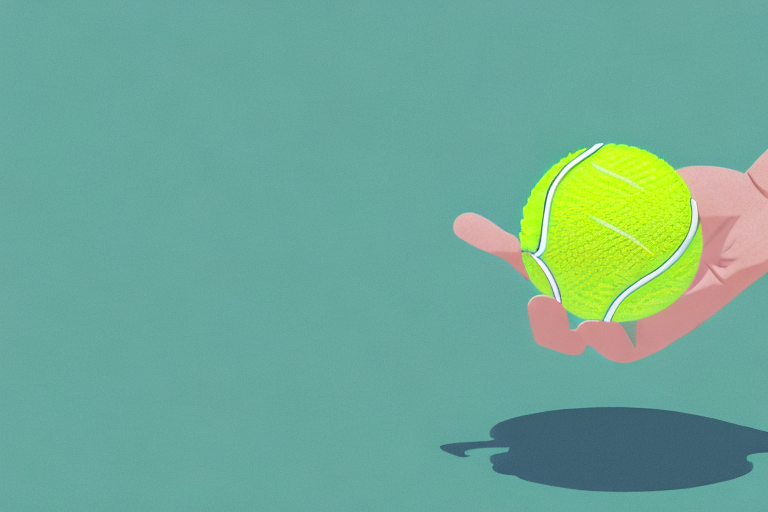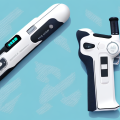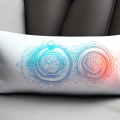If you’re looking for a simple but effective way to relieve muscle tension and pain, self-myofascial release with a tennis ball may be just what you need. Myofascial trigger points are knots or tight bands in the muscles that can cause discomfort, reduced range of motion, and even referred pain in other parts of the body. By using a tennis ball to apply pressure to these trigger points, you can increase blood flow, release tension, and improve overall muscle function. In this article, we’ll walk you through the steps of using a tennis ball for myofascial trigger point massage and answer some common questions about this technique.
What are myofascial trigger points and why are they important?
Myofascial trigger points are areas of tight muscle fibers that may be tender to the touch or even feel like small nodules. These points can develop from overuse, poor posture, injury, or stress. They can cause pain, stiffness, and reduced flexibility, and may also contribute to conditions like tension headaches, back pain, and plantar fasciitis. By targeting trigger points with self-massage techniques like tennis ball release, you can help break up adhesions and restore optimal muscle function.
Understanding the benefits of using a tennis ball for myofascial trigger point massage
There are several advantages to using a tennis ball to perform self-myofascial release. One key benefit is that it allows you to apply direct and specific pressure to trigger points in various parts of the body, unlike foam rollers or other tools that may be too broad or general. Additionally, tennis balls are affordable, easy to store, and versatile, making them a convenient choice for self-massage at home, at work, or on the go.
Preparing your body and the tennis ball for massage
Before you begin using a tennis ball for myofascial trigger point massage, it’s important to warm up your muscles and prepare your body for the pressure. You can do this by doing some light stretching or foam rolling, or by taking a warm bath or shower. You should also make sure that the tennis ball you use is clean and free of dirt or debris, and that you have enough space to comfortably lie down in various positions.
Step-by-step guide to performing myofascial trigger point massage with a tennis ball
Here’s how to use a tennis ball for self-myofascial release:
- Lie down on a mat or soft surface and place the tennis ball under a targeted muscle or trigger point. Start with a less sensitive area if you are new to self-massage.
- Slowly roll the ball back and forth or side to side, using your body weight to apply pressure. You can also hold the ball in place on the trigger point and use deep breathing to relax the muscle and release tension.
- Repeat this process for 1-2 minutes or until you feel the tension in that area start to release. Then, move on to another trigger point, gently releasing the pressure between each area.
- As you use the tennis ball, pay attention to any areas of discomfort or sensitivity. If an area feels too tender or painful, you can use a lighter touch or move to a different spot until your muscles begin to relax.
- You can use the tennis ball in different positions, such as on the floor or against a wall, to target different parts of the body, including the neck, shoulders, back, hips, and legs.
Targeting specific areas of the body with a tennis ball for myofascial release
The beauty of using a tennis ball for self-massage is that you can customize the pressure and intensity to suit your needs and preferences. Here are some specific areas where you may find it helpful to use a tennis ball for myofascial release:
- Neck and shoulders: Roll the tennis ball along the back of the neck and the tops of the shoulders, pausing at any tight knots or trigger points. You can also use a wall to press the ball into the upper back and shoulder blade area.
- Back: Lie on your back with the tennis ball under your shoulder blade, mid-back, or lower back to release knots and tension. You can also sit with your back against a wall and place the ball between your spine and the wall.
- Hips: Place the tennis ball under one glute and roll it around to find the trigger points. You can also use a wall to press the ball into the hip flexors or outer thighs.
- Feet: Roll the ball under your foot, targeting the arch and heel areas. This can be especially helpful for those with plantar fasciitis or foot pain.
Tips for maximizing the effectiveness of your myofascial trigger point massage with a tennis ball
Here are some tips to keep in mind as you use a tennis ball for self-massage:
- Start with a gentle pressure and gradually increase as your muscles begin to release.
- Breathe deeply and slowly, allowing the tension to melt away with each exhale.
- Take breaks as needed and stretch or move your body between sessions to prevent stiffness or soreness.
- Use a tennis ball regularly to maintain optimal muscle health and prevent trigger points from forming.
Combining other techniques with tennis ball massage for even greater relief
While tennis ball massage can be effective on its own, you may also want to combine it with other self-care techniques to enhance the benefits. This can include stretching, foam rolling, hydration, and proper rest and sleep habits. Additionally, if you’re experiencing chronic or severe pain, it may be helpful to consult with a healthcare provider or physical therapist for personalized treatment and guidance.
Safety precautions to keep in mind while using a tennis ball for self-massage
While tennis ball massage is generally safe and considered low-risk, there are some precautions to take to avoid injury or discomfort:
- Avoid using a tennis ball on areas that are inflamed, open wounds, or sensitive to pressure.
- If you have a medical condition or injury, consult with a healthcare provider before starting self-massage with a tennis ball.
- Stop using the tennis ball if you experience sharp pain or discomfort and seek medical attention if needed.
- Use a clean and sanitized tennis ball and avoid sharing it with others to prevent the spread of germs or bacteria.
Frequently asked questions about using a tennis ball for myofascial trigger point massage
Here are some common questions and answers about using a tennis ball for self-myofascial release:
Q: How often should I use a tennis ball for myofascial trigger point massage?
A: This can vary depending on your individual needs and goals, but most people find it helpful to use a tennis ball for self-massage a few times a week, or as needed for muscle tension or pain relief.
Q: Is it normal to feel sore after using a tennis ball for self-massage?
A: It’s common to feel some soreness or discomfort after using a tennis ball for myofascial release, especially if you’re targeting areas with a lot of tension or tightness. This can be a sign that you’re releasing adhesions and improving blood flow.
Q: Can I use a tennis ball for myofascial trigger point massage on my own?
A: Yes, self-myofascial release with a tennis ball is a safe and effective technique that you can do at home or in other settings. However, it’s important to follow proper technique and safety precautions to avoid injury or discomfort.
Q: Are there any types of tennis balls that are better for myofascial release?
A: While any standard tennis ball can be used for self-myofascial release, some people prefer to use balls with a slightly softer or more textured surface to enhance the massage experience. There are also specialty massage balls designed specifically for this purpose.
Q: How long should I hold the tennis ball on a trigger point?
A: This can vary depending on the specific trigger point and your own comfort level, but typically holding the ball on a trigger point for 30-60 seconds can be helpful in releasing tension and promoting relaxation.
Now that you know the ins and outs of using a tennis ball for myofascial trigger point massage, give it a try and see how it can help improve your muscle health and overall well-being!





